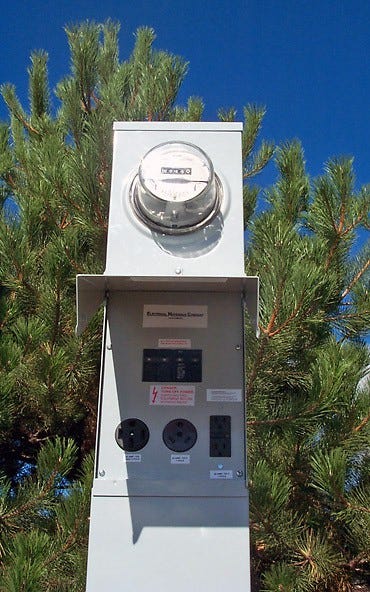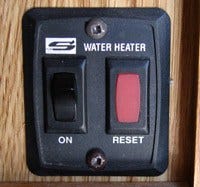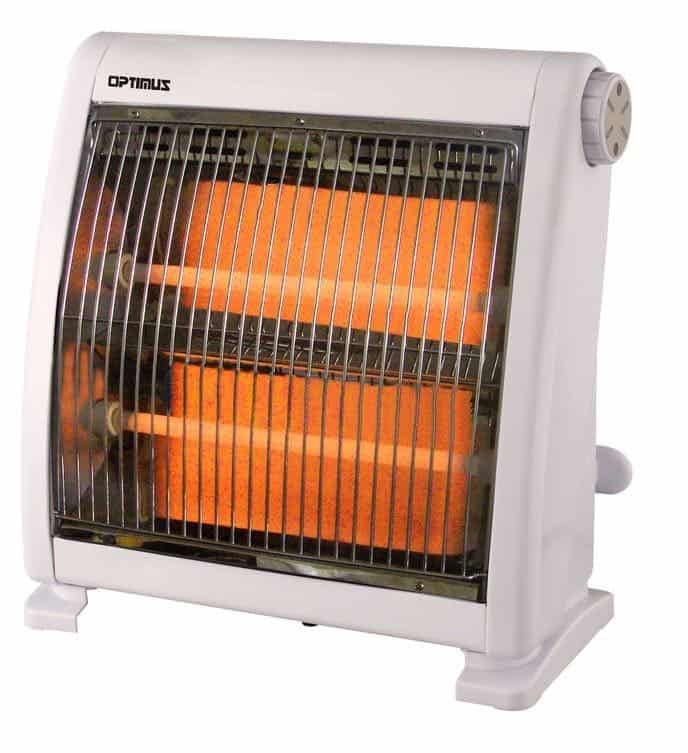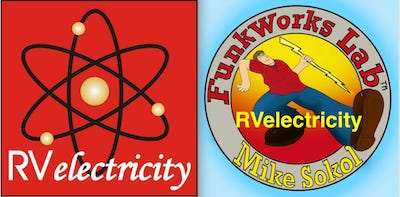Reducing RV’s Metered Billing
Is there any way to plug in RV appliances that will save on metered power?
Dear Mike
My question isn’t as technical as the others… so here goes. I live full-time in my 38′ 5th wheel toy hauler with a 50-amp shore power connection. It also has an Onan 4400 generator if I need it. Where I’m parked, it is switching from flat-rate electric to metered. The pedestal has both 50-amp and 110-volt plugs. Is it cheaper to use the 110 with an extension cord for small appliances and microwave? Only one at a time—I unplug things I’m not using. Unless it’s a fan. Thank you for your time. —Christie
Dear Christie
That’s a great and timely question. The quick answer (for those of you who don’t want to read the full explanation) is no, it doesn’t matter which receptacle you plug into. You can plug a 120-volt appliance into one of your RV’s internal outlets and you’ll use exactly the same kWh (kilowatt hours) of electricity compared to plugging the same appliance directly into the 20-amp outlet on the pedestal.
Just like for your sticks-and-bricks house, the entire panel is being metered for kWh usage. So everything plugged into an outlet in your house (or in your case, the pedestal) will be metered (and billed to you) exactly the same amount.
How does this work?
Here’s a basic wiring diagram of how the 50-amp shore power outlet in the pedestal is split up into the various appliances and electrical systems in your RV.
The pedestal supplies your RV with two separate 120-volt legs which are 180 degrees out of phase with each other. That allows the power panel to be wired to supply either 120 or 240 volts to the load.
However, in nearly every RV on the road, the power panel is wired to supply ONLY 120-volt loads. So that’s one hot leg plus the neutral conductor feeding each air conditioner, battery converter, and all 20-amp electrical outlets in your RV. There are a few exceptions for large coaches wired with 240 volts, but these are pretty rare birds.
What is the meter measuring?
The metered pedestal is measuring the TOTAL amount of electrical energy (kWh) passing through the entire pedestal circuit. So it doesn’t matter if you plug into the 50-amp outlet, the 30-amp outlet, or the 20-amp outlet. If you used 10 kWh of energy, and they’re billing you at 15 cents per kWh, then you’ll owe $1.50 for that usage. And again, it doesn’t matter if you plug your slow cooker into the pedestal directly or an outlet inside of your RV. The meter only sees the TOTAL amount of energy passing through the pedestal.
How can you reduce your energy bill?
First of all, forget about any of the scam devices on the market that say they can reduce your electric bill by up to 85%. First of all, if that were true then you would be stealing electricity from the campground. And that’s a bad thing you never want to do. But be assured they don’t work anyway, so save your money.
Just like in your sticks-and-bricks house, you can do a number of things to help reduce your electric energy costs.
Park in the shade if you can
That’s not always possible, but that will certainly reduce the load on your air conditioner. However, parking in the shade will reduce solar panel charging if you’re camping off-grid.
Forget about the air fryer
While these work great, they typically draw up to 1,800 watts of power for 30 or more minutes at a time. So every air frying session could cost you up to 1 kWh of energy. Depending on the local rate, this could cost you between 10 cents and 40 cents every time you make those tasty no-fat fries.
Turn off your water heater
If you only need hot water for showers in the morning, then don’t leave the electric power to your water heater on all day and night. Turn it on an hour or two before you need it, then power down. And propane may be cheaper (and is certainly much faster) than electric heating.
Turn off your air conditioner when you leave
I see lots of unattended RVs with air conditioners running and windows open at the same time. Yes, I can understand that if you have a pet inside you’ll need the air conditioner during the day, but I’ve checked and that’s not usually the case.
Learn how to save…
There’s a LOT more ways to save on electrical power usage. You just need to use your head and see what you’re wasting.
One of the easiest ways I’ve seen to monitor your own energy usage is the smartphone app for the Hughes Power Watchdog surge protector. This not only shows you instantaneous voltage and amperage your RV is using, it also adds up the total kWh usage for your entire RV. That means you can turn on one appliance at a time and see just how many amps and kWh it takes. Then you can decide if it’s worth the expenditure.
Some of the big ticket items are portable electric space heaters and electric fireplaces. These can easily add $100 to your electric bill each month, so you may want to find better ways to keep warm in the winter.
Hint: We’ll discuss heat pump efficiency soon…
Let’s play safe out there…. Mike















(for older RV's) make sure all of your lights are LED's. (not incandescent or halogen). You can change to LED bulbs or replace the fixtures. You can also replace fluorescent tubes with LED tubes. LED's use 1/10 the power of older electric lights, and last longer too.